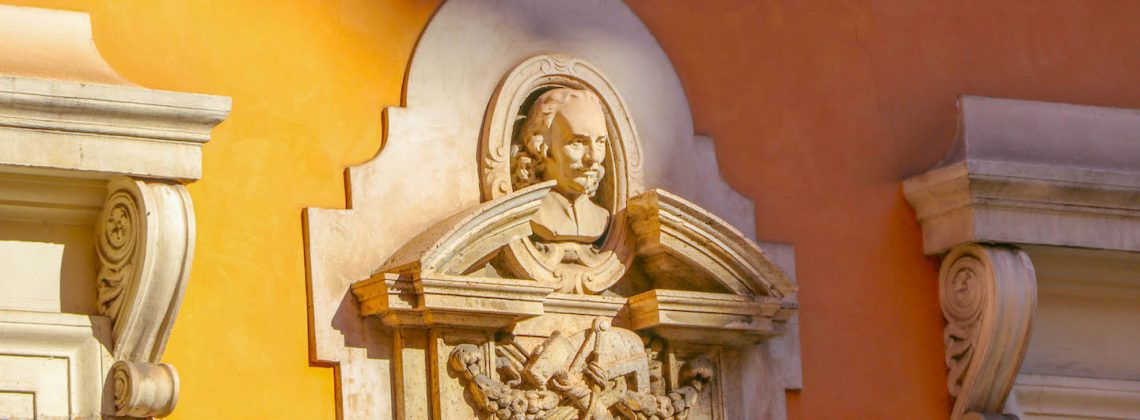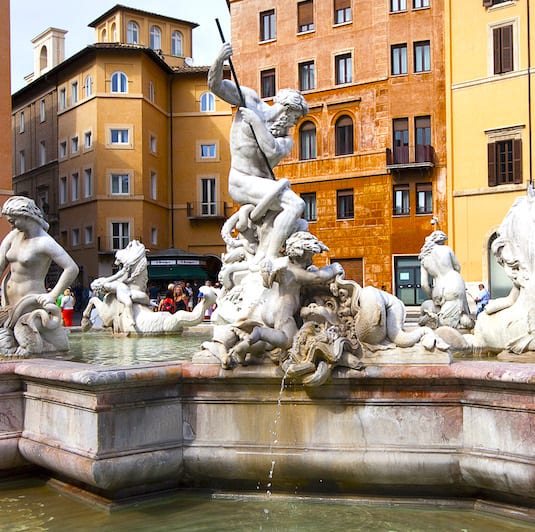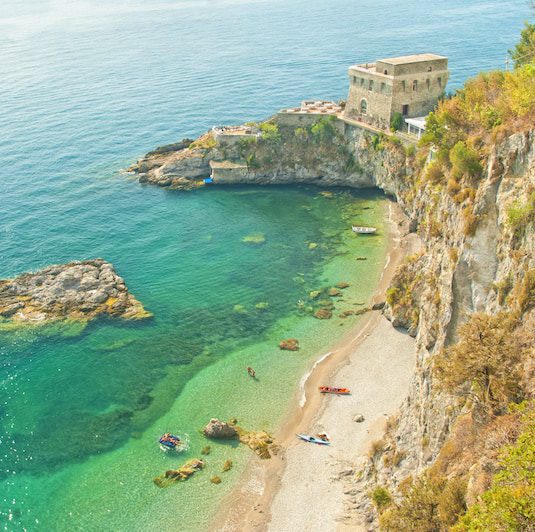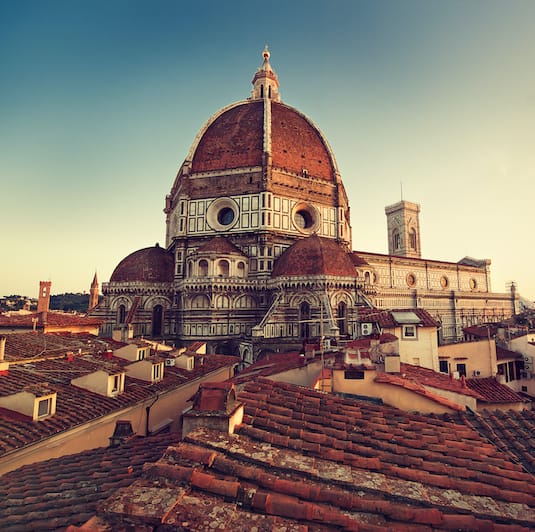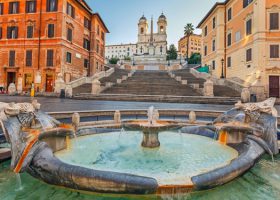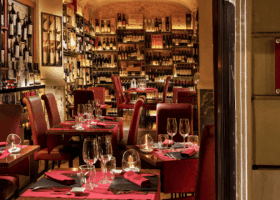These beautiful stairs have been attracting crowds ever since they were built over 300 years ago. But what is such a big deal about a staircase? As one of the most monumental staircases on the planet, we think there are many reasons why the Spanish Steps are famous.
Pro Tip: If you are planning a trip to Rome, you will be reading a lot about the various sites in the city. Bookmark this page so you can come back to it later and brush up on your knowledge of the Spanish Steps.
What are the Spanish Steps?
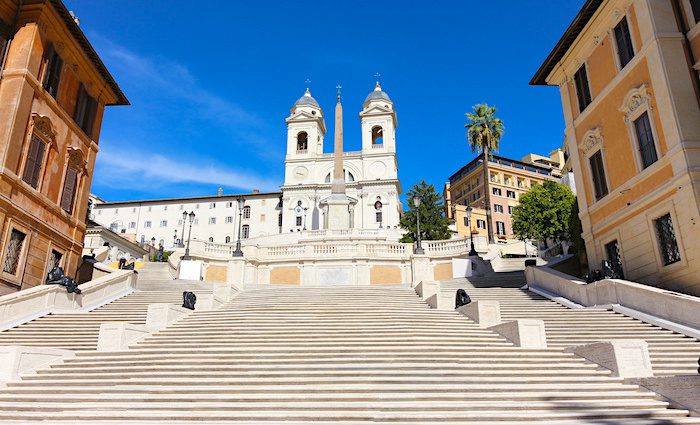
Similar to other monuments in the city, like the Colosseum, the actual name of this monument is not Spanish Steps. That name was applied later on when the Spanish Steps were already famous.
Called Spanish, Paid for by the French, and Built by an Italian!
The steps were built with funds left to the city/area by Étienne Gueffier, who was a French diplomat. He left 20,000 scudi, the traded coin of the time, to improve the area, which went to great use. The goal was to link the church at the top of the stairs, which was also a French church, to Palazzo Manaldeschi below in Piazza di Spagna.
The 135 stairs were designed by Francesco de Sanctis and were completed in 1725 after two years of hard work. The structure was an immediate hit with the local community, which made Piazza di Spagna a very attractive place to take up residence. The steps are dedicated to the holy trinity, which is represented by their three tiers; Father, Son, and Holy Spirit.
The Nickname
The name of the steps eventually took the name “The Spanish Steps,” but only really in English. In Italian, they simply refer to them as la Scalinata, which derives from their proper name, “La Scalinata di Trinita dei Monti.” French and Spanish would follow similarly.
The Spanish Embassy, which is in the Monaldeschi Palace, had been there for hundreds of years prior to the steps being built. Also, the square that eventually housed the steps was named “Piazza di Spagna,” which most likely took its name prior to or after the Monaldeschi Palace was purchased by the Spanish Crown.
The name Spanish Steps most likely was coined by John Keats or Shelley, who lived adjacent to the right of the steps when facing them.
Already in Rome? Book a last-minute food tour or purchase tickets and tours for the hottest attractions!
Planning in advance? See if Rome Tours are worth it.
Top Colosseum Tours
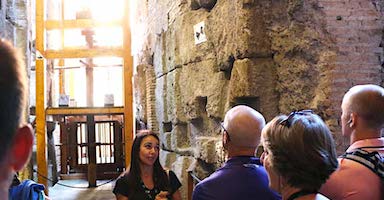
Best Seller
Colosseum Underground Tour with Roman Forum and Palatine Hill
Only 2% of visitors to the Colosseum are able to see the Underground, making tours a rare, exclusive experience. Our tours give you access to the Underground, Arena Floor, and first and second tiers—areas most people never see. Skip the line and enjoy priority access, guided by an expert who brings the Colosseum’s rich history to life. These spots sell out quickly, so don’t wait—secure your place now for this unforgettable opportunity.
See Prices
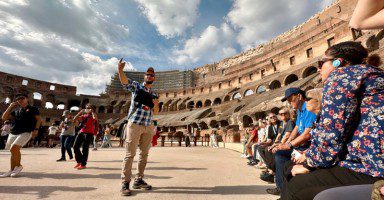
Customer Favorite
Special Access Colosseum Arena Floor Tour Through the Gladiator’s Gate
Reaching the Colosseum’s Arena Floor is no easy feat; tickets sell out quickly, leaving most visitors stuck in crowded corridors with limited views. With us, bypass the lines and enter through the Gladiator’s Gate to stand on the Arena Floor, giving you a front-row view of Rome’s nearly 2,000-year-old symbol of power and glory. With your friendly guide, uncover the Colosseum’s brutal past, then continue to the Roman Forum and Palatine Hill to explore the epicenter of ancient Roman life.
See Prices
So What is the Big Deal?
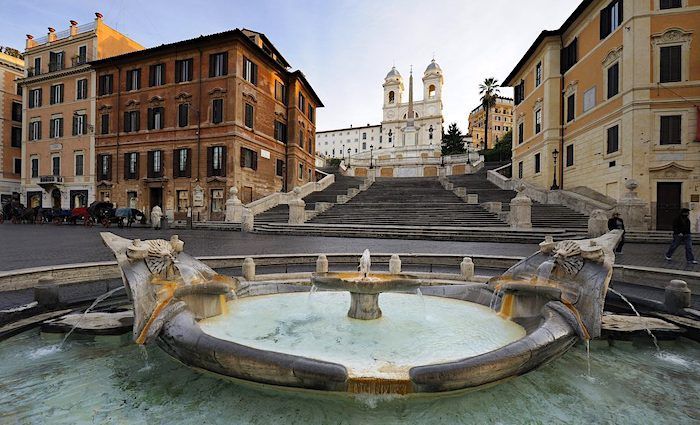
Like with many things, the answer is not so cut and dry as to why the Spanish Steps are so famous. First of all, this area has always been popular with artists. Therefore it automatically attracted beautiful people to the area. As a result, where there are good-looking people, others follow. With the advent of photography and then film, the stairs became the place to see and to be seen.
The Spanish Steps gained even more exposure to the world audience through the 1953 blockbuster film Roman Holiday starring Audrey Hepburn and Gregory Peck. The movie gave American audiences an in-depth view of Rome and created the centerpiece aura of the Spanish Steps.
In the film, Audrey Hepburn can be seen throwing her gelato on the ground. We do not recommend this behavior as it could result in a significant fine for littering.
For those of you who are Matt Damon lovers, there is even a good shot of the stairs in the film Talented Mr. Ripley.
It Has an Ancient Obelisk at the Top
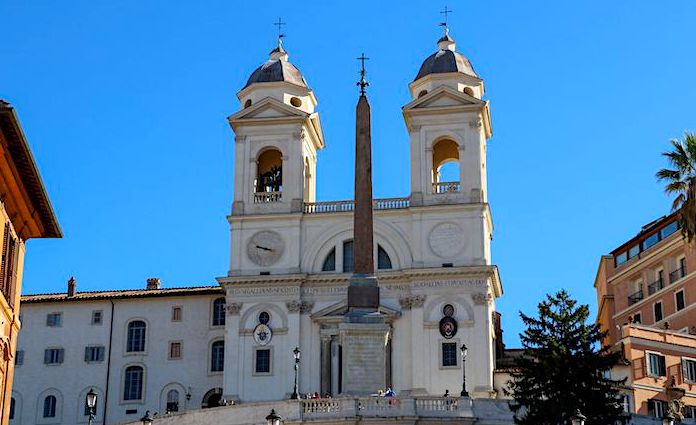
This 45-foot obelisk, featured in the picture below, is not an original taken from Egypt but a copy made by Emperor Aurelian in the late 3rd century. He was apparently inspired by the Flaminio obelisk (Piazza del Popolo) that he ordered a duplicate made.
While it sits perched high above Rome on top of the Spanish Steps, this was not it’s original home. The steps came some 1500 years after the obelisk. It was moved to its current home in the late 18th century from the Horti Sallustiani which is an ancient garden whose ruins are close to Termini Station. It is a cool off-the-beaten-path thing to do in Rome. If you are into things like that, check out our article with tons of similar recommendations.
It was the English District Back in the Day
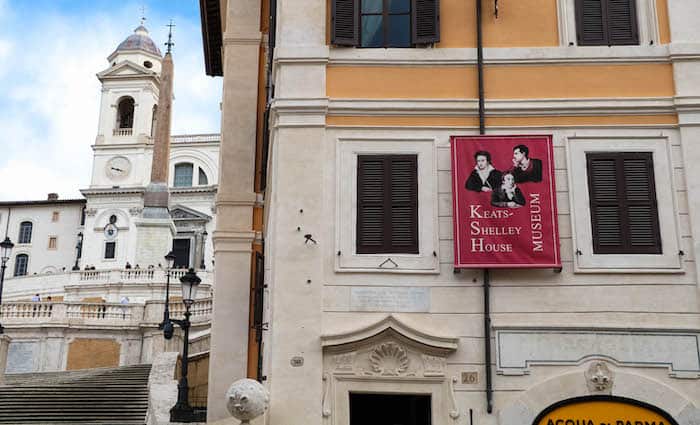
So in the middle of the 18th century, the beautiful trend of the Grand Tour began. This was when British aristocrats finished off their schooling by taking a tour around Europe. It was a way to finish their schooling with some applied learning in the real world. One of those stops was Rome of course and that is a big reason the Spanish Steps became famous.
The area around the Spanish Steps became the so called “English” district, since it was close to the Northern gates of the city. Just like in many American cities in the early 20th century where you had different communities according to country ( like the German or Italian part of town), in Rome this area was the English part. As a result to this day you can find remnants of English culture.
Tea Rooms
If you are looking at the Stairs, then on your right left side you will see the Tea Shop Babingtons. The tea shop was set up by 2 English women in 1893. Their names were Isabelle Cargill and Ann Marie Babington. Amazingly the two of them put together all their savings ( 100 pounds). They then decided to open up a small tea shop in the Anglo-Saxon community in Rome. At the time that just happened to be near the Spanish Steps.
The risks were high, because, at the time, tea was not that popular a drink in Italy. The reason being it could be sold only in pharmacies. They must have done something right since the establishment is still going strong over 120 years later!
Keats & Shelley Museum
Keats did not spend his life there, but simply his final months. A doctor recommended he live out his last days with tuberculosis in a warmer setting and he picked Rome. He was a quite successful young man who accomplished himself as a house-hold name yet died at age 25. He said he could hear the water from his deathbed and wrote about it in his last words.
Today there is a museum set up where he died. The Keats-Shelly house is a must for literary buffs as it is much more than Keats’ final resting place. It is a beautifully decorated home that contains paintings, manuscripts, literary works, and more which makes it a living museum. You’ll find portraits & works from Keats and Shelley. The extensive list includes friends such as Lord Byron, Oscar Wilde, and Elizabeth & Robert Browning.
There is a Fountain at the Bottom Built by Bernini!
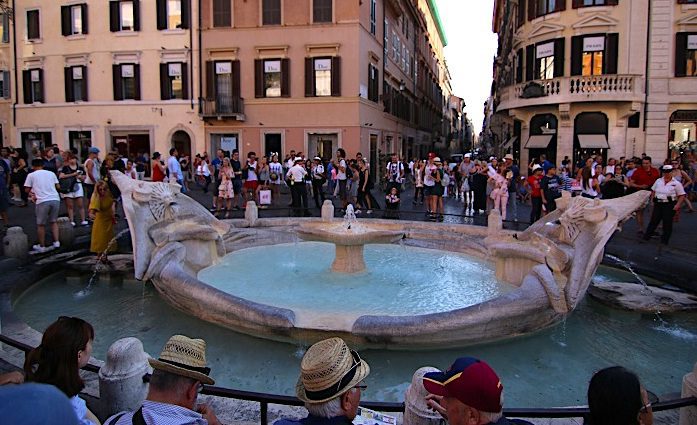
This festive little fountain at the bottom of the Spanish Steps is both beautiful and strange at the same time. It is a baroque fountain of a boat built directly at the foot of the steps that add greatly the “magic” of the area. The fountain was designed and constructed by Pietro Bernini with the help of his son Gian Lorenzo Bernini and has an interesting story.
Even today, there are many floods in Rome but back in the 16th century, it was even worse. In 1598 a massive flood caused the Tiber to overflow which caused a boat from the river to be carried into Piazza di Spagna. When the waters retreated, the boat remained there in the square. When Pietro Bernini received the commission Pope Urban VIII, he used the boat as inspiration.
Popular Vatican Tours
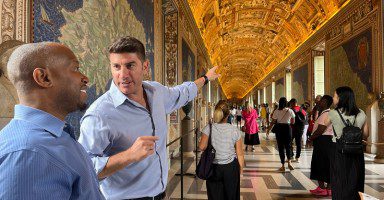
Best Selling Tour
Privileged Entrance Vatican Tour with Sistine Chapel
Without the right access, visiting the Vatican means fighting crowds, long waits, and missing the most significant rooms and works of art. Our privileged entrance tour offers more than just entry—it’s an immersive experience led by a storytelling guide who brings the Vatican to life. Skip the line and explore the Vatican Museums, including the Raphael Rooms, the Sistine Chapel, and St. Peter’s Basilica with engaging insights that make each moment memorable and meaningful.
See Prices
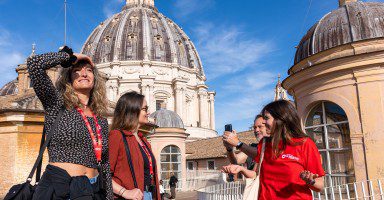
Top Rated Tour
Ultimate St. Peter’s Basilica Dome Climb and Tour with Papal Tombs
Visiting St. Peter’s Basilica and its dome on your own can mean dealing with crowds and waiting in line for hours. Our early-morning tour, led by a captivating local guide, ensures you skip the hassle with privileged access and insider knowledge, including the best times to climb for awe-inspiring views. Explore the stunning Basilica, take in breathtaking panoramas, and descend into the sacred Papal Crypts for a truly immersive experience.
See Prices
Here’s Where To Stay in Italy’s Most Popular Destinations
Rome, Florence, Venice, Amalfi Coast, and Capri

